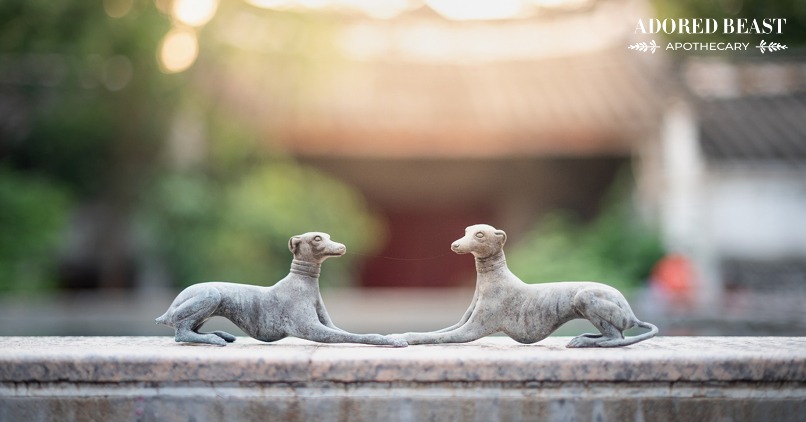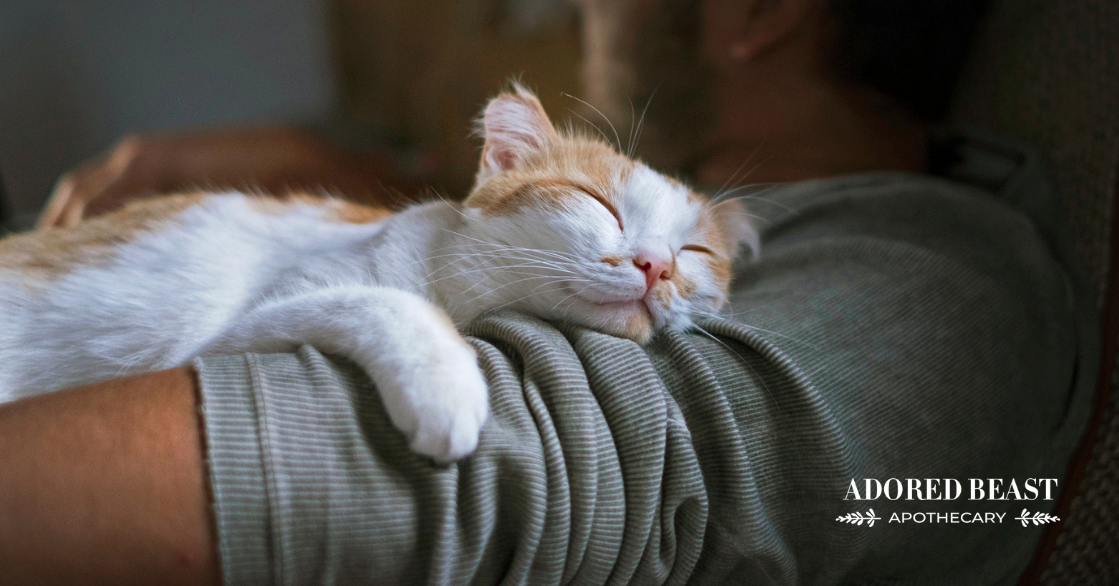Acupuncture for pets is all the rage now with many clinics offering it as a treatment modality. But what is acupuncture? Where did it originate? And how does it work?
Acupuncture is actually one of the oldest treatment modalities used for both people and animals on the planet, alongside herbal medicine. Its history extends back thousands of years. In fact, the preserved mummy of the 5,000 year old “Iceman” found in the Alps had tattoos on his body corresponding to modern day acupuncture points.
Acupuncture is one of 5 branches of Traditional Chinese Medicine (TCM), a system of medicine that originated with the the Taoists in ancient China. TCM has been the main method of treatment in the ancient East for over 3,500 years. The Yellow Emperor’s Classic of Internal Medicine was written around 2600 BC and is considered one of the oldest medical textbooks with its concepts still in use today.
Over thousands of years, TCM evolved and developed into a complete system of not only medicine but nutrition, exercise, and lifestyle as revealed in it’s 5 branches: acupuncture, herbal medicine, Tui-na/massage, food therapy, and Tai-chi/exercise. The ancient Taoists were the original functional medicine doctors, as their goal was to live a healthy life for as long as possible. They believed the way to achieve this was to live in a state of dynamic balance, both internally and within our environment.
How Acupuncture Works
Acupuncture consists of placing very small needles through the skin into specific points on the body. The acupuncture points are on pathways called meridians or channels that were mapped out long, long ago. There are actually acupuncture charts from ancient China for chickens, cows, horses, and camels!
The channels are pathways through which the life force, or chi, flows throughout the body, connecting the organs and body parts. If the chi is flowing smoothly and strongly to all parts of the body then the body can maintain a state of health and ease. If something is blocking the chi, or it’s deficient or stagnant, then pain and dis-ease result. Acupuncture needles help to open up the channels, direct the flow of chi, and tonify or sedate it. It helps to bring the body back into a state of harmony, helping the body to heal and repair itself.
Modern science has also investigated acupuncture, trying to determine how it works from a physiological perspective. They have discovered that many of the acupuncture points are actually located in areas of bundles of microscopic nerve bundles and capillaries. Locally, the needle causes the body to release inflammatory mediators like histamine, and other compounds to stimulate healing of the local area.
The needles also have an effect on the central nervous system, endocrine system, and immune system mediating the release of neurotransmitters from the brain, i.e. endorphins, serotonin, dopamine, and hormones. These compounds can act together to reduce inflammation, reduce pain, fight infection, repair tissue, modulate hormonal output, improve digestion, improve circulation of blood and lymph.
The Benefits of Acupuncture of Pets
So what is acupuncture for pets good for? Experts suggest that acupuncture my be helpful for any state of imbalance or disease, such as:
1. Pain management for:
- Arthritis – back pain, neck pain, hip pain, shoulder pain, knee pain
- Intervertebral disc disease
- Hip dysplasia
- Elbow dysplasia
- Cranial cruciate ligament tear (either pre or post-surgery knee surgery)
2. Cancer:
- As a sole therapy
- As an adjunct to chemotherapy and radiation
- Side effects from treatment: anorexia, nausea, weight loss, energy, pain
3. Neurological disorders:
- Intervertebral disc disease resulting from a herniated disc
- Degenerative myelopathy
- Nerve paralysis or damage – including scuffing of hind limbs when walking
- Seizures or epilepsy
4. Urinary and fecal incontinence
5. Allergic disease
6. Gastrointestinal disorders:
- Inflammatory Bowel Disease (IBD)
- Chronic diarrhea and/or vomiting
- Chronic gurgling (LOUD) stomach
7. Respiratory problems
- Asthma
- Tracheal collapse
- Chronic upper respiratory infections
8. Internal organ disease:
- Chronic renal failure
- Heart disease
- Liver Disease
9. Autoimmune diseases:
- Immune-mediated hemolytic anemia
- Immune-mediated thrombocytopenia
- Eosinophilic granuloma in cats
10. Reproductive or Infertility disorders
11. Behavioral issues (Anxiety)
12. Endocrine disorders:
- Hypothyroidism
- Cushing’s disease
- Addison’s disease
Acupuncture can be used for any state of imbalance in the body, but there are two places it really shines: geriatric animals and as a preventative modality. Acupuncture can give older animals a wonderful quality of life during the last years of their life. It can keep them comfortable physically, mentally, and emotionally. It works wonderfully earlier in life to prevent an imbalance from becoming a full-blown disease. Often early disease can be detected by an acupuncturist and treated before it becomes a problem.
One final thing, acupuncture for pets works best if it is combined with a holistic plan that includes herbal medicine, species-appropriate nutrition, and supplementation.
Veterinarians must be certified in order to practice acupuncture. The Chi University, AHVMA, and IVAS have listings of certified veterinary acupuncturists.












